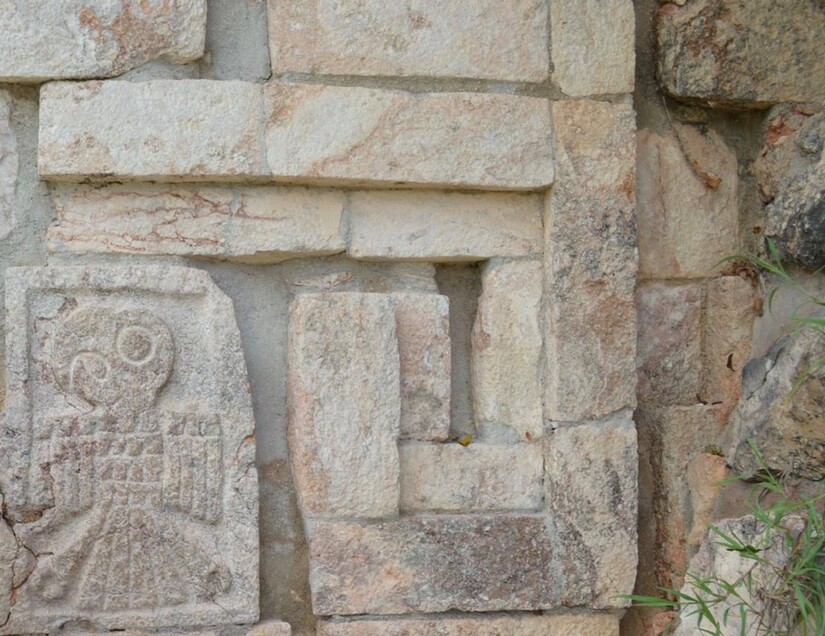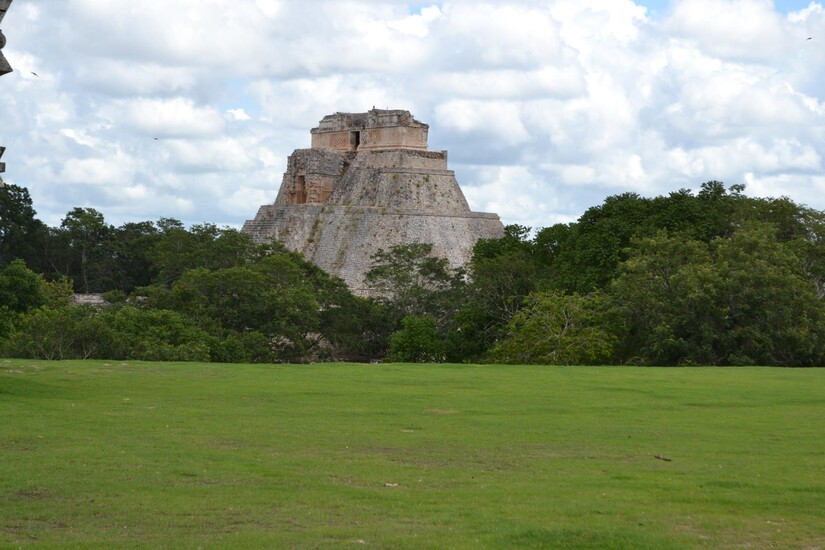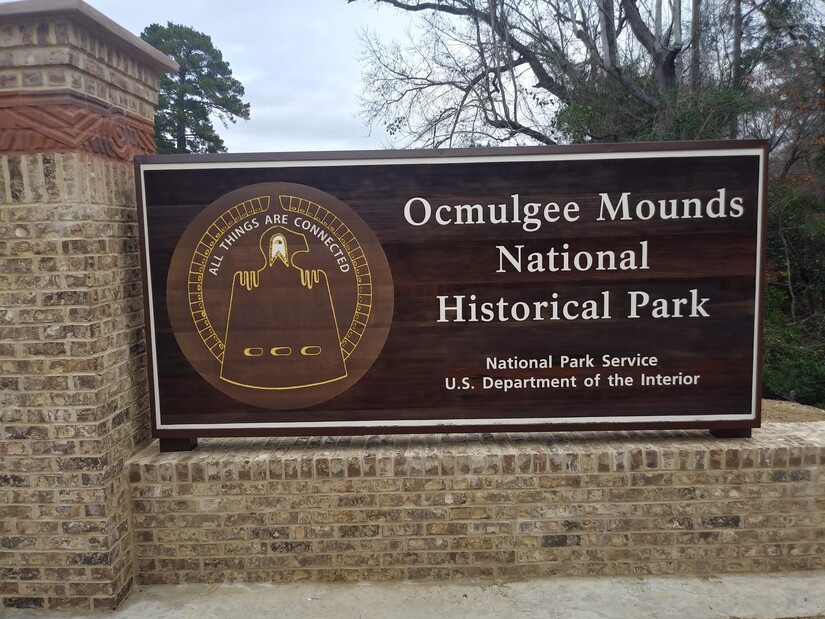Image


Nestled in the heart of Georgia, the Ocmulgee Mounds have long captivated the imagination of archaeologists and historians with its thousands of years of human history.
While most mainstream perspectives attribute the ancient structures remaining at the Ocmulgee Mounds National Historial Park to the indigenous peoples of the Southeastern United States, a controversial theory from Richard Thornton suggested a possible Mayan origin for the mounds.
Thornton is an architect and author of several books about alternative history that argued for a connection between the Ocmulgee Mounds and the Mayan civilization, sparking a debate that continues to unfold.
In Thornton's books and in a popular 2011 article for the news website Examiner.com, he suggested architectural similarities and symbolic connections between sites like the Ocmulgee Mounds and the artifacts found there and Mayan structures and artifacts found in Central America.
 This bird effigy located on a structure in Uxmal, Mexico does share similarities to the bird effigy found on the floor of the Omculgee Mounds earth lodge (Photographer Nate Weeks)
This bird effigy located on a structure in Uxmal, Mexico does share similarities to the bird effigy found on the floor of the Omculgee Mounds earth lodge (Photographer Nate Weeks)Thornton shared a similar theory about the Kenimer site, an ancient archaeological site near Sautee Nacoochee in North Georgia, as well.
The claims have also been made on the History Channel show "America Unearthed" which also explored an unidentified site in the Chattahoochee National Forest that was claimed to have Mayan connections.
The host of "America Unearthed" even discussed the spiral mound located in the Ocmulgee Mounds National Historical Park and how spirals mounds can also be found in Central America.
However, it is crucial to note that this hypothesis has faced skepticism from many prominent archaeologists and experts in the field.
Mark Williams, an archaeologist at the University of Georgia, has responded critically to Thornton's claims. Williams dismissed the Mayan connection as a "wild and unsubstantiated guess."
Williams' remarks underscore the consensus among archaeologists that Thornton's theory lacks a solid foundation in established archaeological evidence.
 Mayan ruins throughout Central America are just some of the fantastic remnants of past advanced civilizations (Photographer Nate Weeks)
Mayan ruins throughout Central America are just some of the fantastic remnants of past advanced civilizations (Photographer Nate Weeks)The academic community has not embraced the idea of a Mayan connection to the Ocmulgee Mounds, raising questions about the credibility of the claim.
While there may not be much academic debate over whether there truly were potential Mayan connections to the Ocmulgee Mounds and other ancient sites in Georgia, it is exciting to think about all the unknowns from the past cultures and civilizations that once called the land we now live on home.
It is also an important reminder about the importance of preserving and protecting special places like the Ocmulgee Mounds, Rock Eagle, and the Kenimer site.
 As the Ocmulgee Mounds National Historical Park says "All Things Are Connected" (Photographer Nate Weeks)
As the Ocmulgee Mounds National Historical Park says "All Things Are Connected" (Photographer Nate Weeks)